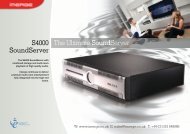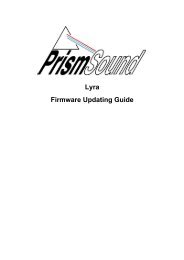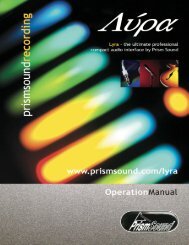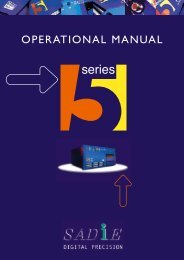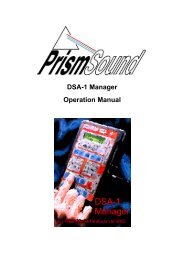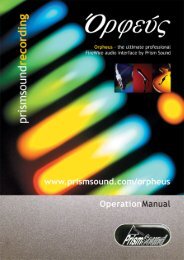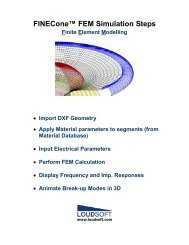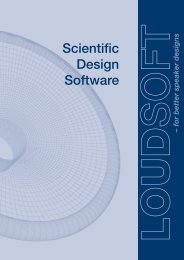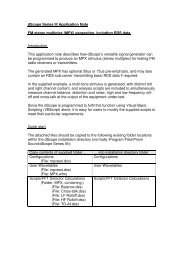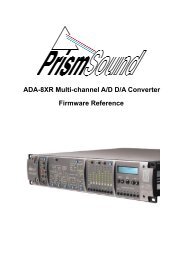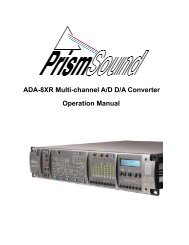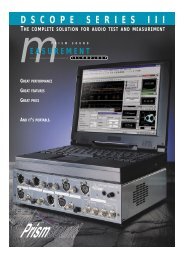FINEBox⢠T U T O R I A L - Test and Measurement
FINEBox⢠T U T O R I A L - Test and Measurement
FINEBox⢠T U T O R I A L - Test and Measurement
- No tags were found...
You also want an ePaper? Increase the reach of your titles
YUMPU automatically turns print PDFs into web optimized ePapers that Google loves.
Fig. 25 shows the 36Liter bass reflex box tuned to 27 Hz from the previous example,as the blue curve. The red curve is the comparable ABR having a moving mass of70g to provide close to the same tuning <strong>and</strong> pass b<strong>and</strong> response. The ABR data areshown in Fig. xxx. The Fs of the ABR is 15Hz, which causes a notch in the responseat that frequency, therefore changing the slope of the low frequency response. TheABR Fs should therefore be placed well under the pass b<strong>and</strong>.Figure 25: ABR response___ compared to bass reflex___The passive ABR unit can be designed by pressing the [ ABR ] button to get thedialogue shown in Fig. 26.Figure 26: Passive ABR unit designerThe ABR unit will have its own resonance Fs just like the cone Fo (Use FINEMotor tocalculate the compliance <strong>and</strong> Fs of the ABR). Fig.26 shows the dialogue which isused to specify the ABR. The moving mass is the combination of the passive cone+½ surround, plus an added mass. Increasing the added mass will work like a lowertuning frequency in the box.Choosing an ABR with the same area as the woofer cone area Sd, puts highdem<strong>and</strong>s on the excursion capability of the ABR. This is calculated in FINEBox underthe [Vent <strong>and</strong> Xmax] tab. The excursion can be reduced by choosing a larger ABRdiaphragm area, but the added mass must be increased. (by the power of 2). All thisis calculated automatically <strong>and</strong> the user can just experiment with different inputs.15



